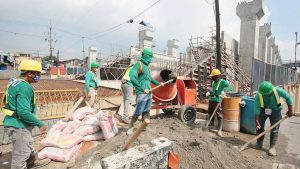MULTILATERAL lenders should make more investments in power and transport infrastructure to meet the United Nations’ sustainable development goals (SDGs), according to the European Investment Bank (EIB).
“In the coming years, emerging markets will require significant infrastructure investment to facilitate economic growth, respond to demographic and urbanization pressures and meet the sustainable development goals,” the EIB said in its Global Emerging Markets Risk Database Consortium report.
The Philippines has committed to hit the 17 SDGs by 2030. Last year, the Philippines fell three spots in the global SDG achievement ranking to 98th out of 166.
Investment in the global infrastructure market is valued at around $1 trillion a year, though the unmet need is estimated at $2-4 trillion.
More than half of the total investment demand would be allocated to finance generation, capacity, transmission and distribution networks in countries’ power sectors. It would also be needed for investment in transport (roads, ports and airports) and telecommunications.
The World Bank Group counted 2,091 infrastructure contracts in 2022, with a total exposure of 89.2 billion euros.
East Asia and the Pacific had the fifth biggest number of infrastructure contracts at 152, with a total exposure of 6.5 billion euros.
The region is behind Europe and Central Asia (627), Latin America and the Caribbean (475), Sub-Saharan Africa (377), and the Middle East and North Africa (278), but is ahead South Asia (130).
However, East Asia and the Pacific received the fewest number of financial contracts at 208, valued at 5.2 billion euros.
“International trade finance companies can help businesses in emerging markets improve their cash flow position and reduce their risk exposure,” according to the report.
“Improving availability to lending can benefit small and medium businesses in increasing working capital capacity, improving inventory turnover and revenue and offering increased employment opportunities,” it added. — Beatriz Marie D. Cruz
